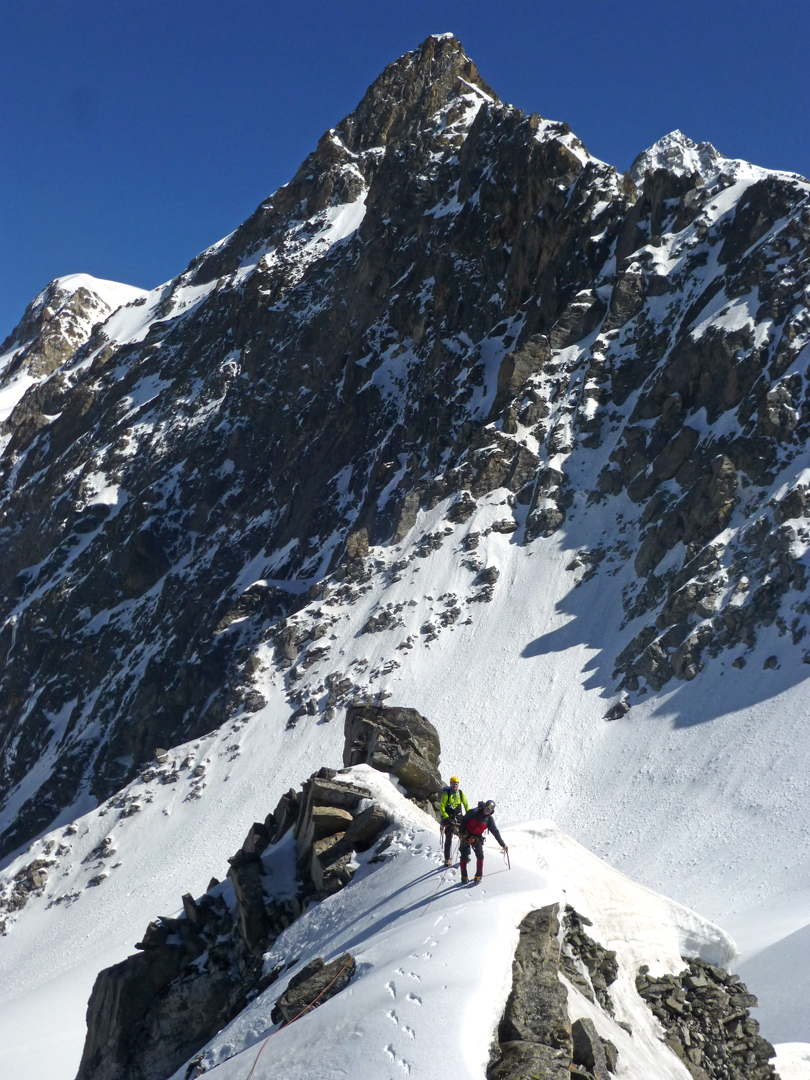Vishnu Killa: East Glacier and South Face
India, Uttarakhand, Western Garhwal

On May 21 an Indo-British party led by Francis Blunt, Adele Pennington, and I (U.K.), and Heera Singh and Mangal Singh (India), made the likely first ascent of the highest peak of the Vishnu Ghar Dhar Range.
This range forms the southern fringe of the high Himalaya to the south of the Badrinath-Gangotri Massif. It is bounded by the Alaknanda Valley to the east, the Kedarnath Valley to the west, and the Panpatia Glacier to the north. The range contains over a dozen 5,000m peaks and several significant south-flowing glaciers, and only one major peak had definitely been climbed and recorded prior to 2016: Peak 5,919m, named Lakshmi’s Peak by the first-ascent party, which approached from the Panpatia side (AAJ 2001).
Approaching from the Joshimath side, to the south, we followed the western flanks of the Kalpa Ganga valley (also known locally as the Hir-na-wati) above Kalpeshwar. From the road head at Urgam, our route ascended 1,500m to Bansi Narayan Temple, then traversed a ridge called Acchari Dhar on a trail used by local people. Base camp was made at 3,830m below the Gimme Glacier (locally called Rund Glacier).
Peak 5,968m was reached by climbing an icefall and crossing the 5,360m Gimme Khal (col). The final climb was a classic glacier ascent with slopes to 55°. Progress was facilitated by a full cover of spring snow; the icefall could be considerably more difficult and dangerous later in the year.
We named the summit Vishnu Killa (5,968m, 30°39’25”N, 79°22’10”E), and the overall grade of the climb was AD or III on the IMF’s Himalayan scale. The other summit members were Stephen Fletcher, Phil Griffiths, Martin Hulme, David Lohmann, Raymond McCourt, Simon Ridout, and Nigel Williams (all U.K.).
Other peaks in the area appear to offer good rock and alpine-length climbs, and the range would make an excellent venue for training courses for aspiring Himalayan climbers..
Martin Moran, U.K.
Editor's note: A two-person Indo-British expedition also did some exploration of this range from the Panpatia side but failed to achieve anything significant due to illness. However, they confirm the peaks would present good objectives for alpine-style climbing.




